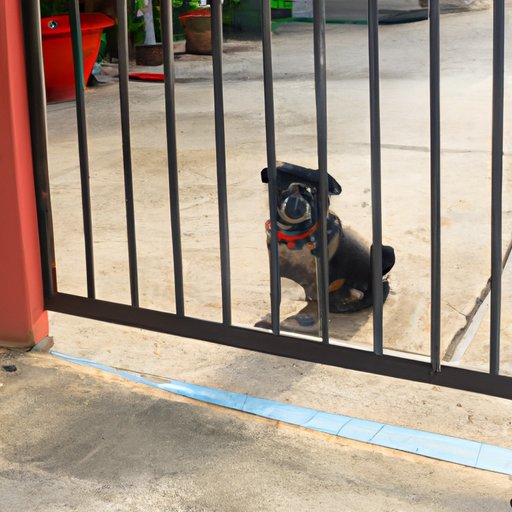
I. Introduction
As pet owners, we all have to leave our furry friends alone sometimes – whether it’s for work, running errands, or traveling. But how long is too long to leave your dog alone? This is an important question to ask, as leaving your dog alone for extended periods can lead to anxiety, stress, and behavioral issues. In this article, we will explore how to determine the ideal timeframe for leaving your dog alone, and offer some tips and strategies for managing their alone time.
II. Understanding Your Dog’s Independence: How Long is Too Long to Leave Your Furry Friend Alone?
Before we dive into specifics, it’s important to understand that how long you can leave your dog alone largely depends on their personality and behaviors. Some dogs are more independent than others and can handle being left alone for longer periods. Other dogs may become anxious or destructive if left alone for even a short period. As a general guideline, most adult dogs can be left alone for 8-10 hours a day, but this can vary depending on breed, age, and health. Larger breeds or older dogs may need more frequent potty breaks, while younger dogs or smaller breeds may have lower bladder control.
III. The Ideal Timeframe: Tips for Leaving Your Dog Alone without Guilt or Worry
If you’re concerned about leaving your dog alone for too long, the good news is that you can help them build independence and trust over time. You can start by gradually increasing the amount of time you leave your dog alone – starting with shorter periods and slowly working your way up. It’s also important to provide your dog with adequate exercise, food, water, and a comfortable environment to help them feel secure when they’re alone. If your dog has separation anxiety, training and therapy can also be helpful in managing their anxiety and helping them feel more comfortable when you’re away.
IV. Home Alone: What Science Says About Lengthy Separation from Your Canine Companion
Studies have shown that prolonged separation from their owners can lead to stress and anxiety in dogs, and can even contribute to behavioral issues such as excessive barking or destructiveness. It’s important to monitor your dog’s behavior and emotional state when you’re away, and to seek help if you suspect they are suffering from separation anxiety. Signs of separation anxiety can include excessive barking, whining, panting, destructive behavior, or bathroom accidents – especially if these behaviors only occur when you’re away.
V. Breaking Down Hours & Strategies: What You Need to Know About Leaving Your Dog Alone
There are several strategies and options for managing your dog’s alone time. Crate training can be a helpful tool in providing your dog with a safe and comfortable space when you’re away. Hiring a dog sitter or dog walker can also be a good option for providing your dog with companionship and extra attention while you’re away. Doggy daycare is another option that can provide socialization and exercise for your dog during the day. It’s also important to consider your dog’s age, health, and temperament when determining how long they can be left alone. Puppies or older dogs may have different needs than adult dogs, and dogs with health issues may require more frequent monitoring and care.
VI. The Important Factors to Consider: Info & Insights on Leaving Your Dog Alone for Extended Periods
If you’re planning an extended period away from your dog, there are several factors to consider. It’s important to prepare your dog’s environment to ensure they have everything they need while you’re away, such as food, water, and comfortable bedding. Providing comfort items such as familiar toys or clothing items can also help your dog feel more secure. It’s also important to find a reliable caregiver or boarding facility to care for your dog while you’re away. Lastly, consider using technology such as pet cameras or GPS trackers to stay in touch with your dog and monitor their wellbeing.
VII. Conclusion
Leaving your dog alone is a fact of life for many pet owners, but it’s important to do so responsibly and with your dog’s wellbeing in mind. By understanding your dog’s independence, providing them with adequate care and attention, and using strategies to manage their alone time, you can ensure that your furry friend stays happy and healthy even when you’re away.





